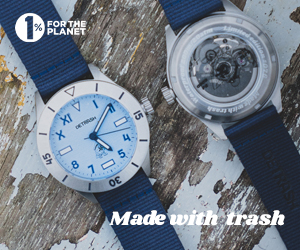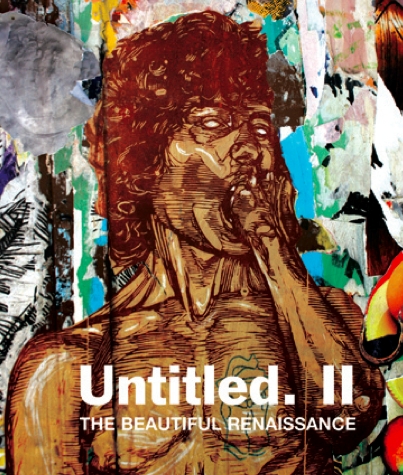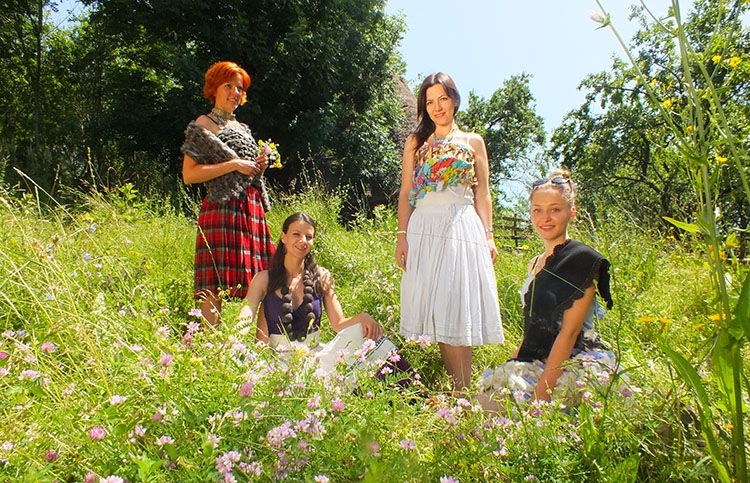Click to enlarge. Infographic from Debating Europe.
The topic of whether a common ‘European identity’ is an utopia or an attainable goal has been debated heatedly during the last decade. Despite the conflicts and differences that may divide nations, people seem to recognise that there is a common value that unites European nations: its culture and heritage. Understanding how we influenced each other in the past – for good and bad – helps us to connect to our roots, appreciate and protect our ‘cultural sustainability’, i.e. maintaining a sense of place and identity. However, exploring our common European history and tradition doesn’t make us into conformists – the idea is that we retain our cultural differences and integrity – but it allows us to discover links in our past that might help us look towards positive ways of working closer together in the future.
EVEHD ‘Engaging Volunteers In European Heritage Discovery’ is a project supported by the European Union through their Culture 2007-2013 programme. Led by Grampus Heritage in the United Kingdom, six countries came together to get volunteers involved in heritage discovery. Bildungshaus Heideland from Germany, Satul Verde Association from Romania, Ipel Eko and Lišov Museum from Slovakia, Pamukkale University from Turkey and Náttúrustofa Vestfjarða (NAVE) from Iceland focused on some historical links between the countries in the past.
Here are six little stories to illustrate the point.
Iceland and the United Kingdom
The Norse–Gaels or in Scottish Gaelic: Gall-Ghàidheil, were a people who dominated much of the Irish Sea region, including the Isle of Man, western Scotland and eastern Ireland for a large part of the Middle Ages. Other modern terms used include, Hiberno-Norse, Scoto-Norse, Irish–Norse and Foreign Gaels. According to the Landnámabók, there were papar or culdees (Gaelic monks) in Iceland before the Vikings settled there from 874AD. Later on, Scottish and Irish women who married Viking men also ended up settling in Iceland. This Gaelic input was confirmed by recent DNA test results, which show that 20% of men and 63% of Icelandic women have Gaelic ancestry. From the sagas we also know that many Gaelic monks left Iceland when the Vikings arrived – we presume they returned to Ireland and Scotland.
So there was a two-way movement of people between the British Isles and Iceland. It might come out in the genes by the appearance of people – hair, skin, eye colour, in language, so maybe it also comes out through art and crafts?
The late Alexander Ricthie of Iona had a great influence on the Scottish Arts & Crafts revival. He combined Celtic and Norse heritage art to create something very special that carries on today. In many ways Norse jewellery making skills as found in Iceland live on and on in the United Kingdom through Alexander Ritchie and those Scots that followed: Ian McCormack, Robert Allison and Ola Gorie. The styles, the endless knots, the motifs, the interlocking beasts, all draw on a Gall-Ghàidheil heritage and a people who exchanged ideas, fashions and styles for 1,100 years before the Cod War!
 Alexander Ricthie’s motifs perpetuated Celtic and Norse heritage through his designs: the Iona cross (bottom right), the Norse ship (centre bottom) and his iconic annular and penannular brooches / cloak pins.
Alexander Ricthie’s motifs perpetuated Celtic and Norse heritage through his designs: the Iona cross (bottom right), the Norse ship (centre bottom) and his iconic annular and penannular brooches / cloak pins.
Romania and Turkey
If you talk about Romania, ‘Dracula’ is likely to be mentioned in the conversation. Of course, not everyone knows that this story is fiction and not a historical fact. The 1897 Gothic horror novel by Irish author Bram Stoker was a success due to the fact that the author seems to have done his homework and made it sound very believable. Count Dracula is largely based on Vlad III, Prince of Wallachia (1431–1476/77) who was a member of the House of Drăculești. After his death, he began to be called Vlad the Impaler (modern Romanian: Vlad Țepeș) because of his reputatiion for impaling Ottoman Turkish captives.
Far from being a frightening figure, Vlad III is a folk hero in Romania and Bulgaria, owing his protection of both north and south regions of the Danube from the Ottomans. But the story goes deeper than that. The Ottomans never swallowed Romania up into their vast empire, but were paid a tribute instead. Part of that tribute was in children, especially boys, who became Janissaries (assassins and elite guards) in the Ottoman army. From the 1380s to 1648, the Janissaries were gathered through the devşirme system which was abolished in 1638. It involved the enslaving of non-Muslim boys from Greece and the Balkans. Vlad and his brother Radu were two of those children, so they grew up to be very familiar with the Ottoman army’s tactics. When he ended up back in Romania, he put his knowledge to good use, carrying out harrying attacks and lightening raids. The Ottomans feared and respected him and he was largely responsible for keeping present-day Romanian territory from falling under Ottoman domination.
 Vlad III, ‘The Impaler’. Two medieval sitres associated with him in Romania (Transylvania), Bran castle (left bottom) and Sighisoara, his supposed birthplace (right bottom). Prince Charles (centre left) claims to be related and campaigns tirelessly in Romania for nature conservation, cultural landscapes and architectural protection. Top left and right, print of the impaling process and coins minted by Vlad III. Second down on the right, the Christian boys being offered under the devşirme system. Other pictures: Christopher Lee played Dracula after the World War II and Richard Roxburgh more recently; Janissaries with the Sultan and a werewolf – a fictional frightening morph of Dracula based on a strong medieval belief in such beings.
Vlad III, ‘The Impaler’. Two medieval sitres associated with him in Romania (Transylvania), Bran castle (left bottom) and Sighisoara, his supposed birthplace (right bottom). Prince Charles (centre left) claims to be related and campaigns tirelessly in Romania for nature conservation, cultural landscapes and architectural protection. Top left and right, print of the impaling process and coins minted by Vlad III. Second down on the right, the Christian boys being offered under the devşirme system. Other pictures: Christopher Lee played Dracula after the World War II and Richard Roxburgh more recently; Janissaries with the Sultan and a werewolf – a fictional frightening morph of Dracula based on a strong medieval belief in such beings.
Germany and Slovakia
These two European states have a mixed historical acquaintance. In World War II, Slovakia was given its own nation status by Germany in return for fighting with the Axis. They were uneasy comrades and a revolt by Slovakians was savagely crushed.
Another reason for Slovakian support for the Third Reich was the fact that many Germanic people lived in Slovakian territory (and also in Romania). They had arrived throughout the medieval period (12th to 15th centuries), after the Mongol invasion of Europe in 1241, attracted by rulers seeking specialists in various crafts and trades such as mining. Germans settled chiefly in the older Slavic market and mining towns, the northern territory of the Kingdom of Hungary, once called Upper Hungary. They became a wealthy elite and were called the Slowakeideutsche. Until the 15th century, the ruling classes of most cities in present-day Slovakia consisted mainly of Germans.
During the EVEHD programme, hosted by Ipel Eko, we visited the World Heritage mining town of Banská Štiavnica and learned something about the town’s history and legends. The most interesting story concerns the locating of the town by an encounter with two salamander lizards… Which goes like this…
A long, long time ago, when everything looked different, but the Štiavnica hills and valleys already had their familiar shape, a shepherd, it is said, was dozing half asleep in the sun next to his sheep on the slopes of today’s Old Town Hill. Suddenly, something sparkling caught his eye and he just had time to catch sight of two lizards – the back of one glittered with gold, the other with a silver dust. They hid from him under a boulder. The shepherd rolled the boulder aside and to his surprise he found beneath the boulder a nugget of gold… This fortuitous accident changed the life of the poor shepherd and, as legend would have it, it was also the beginning of the Štiavnica mining industry. And as a consequence, the lizards were included in the older coat of arms of our town, which today is a shield with the town walls and mining tools.
 Centre: The main street of the World Heritage mining town of Banská Štiavnica (Slovakia). Clockwise from top left: the annual Salamander lizard parade, a town surrounded by sheep pasture, visitors to the mining museum, communistic art, dragon slaying saints, lots of owls in art and sculpture, the Catholic church, a three-faceted Green Man, volunteers visit the town, the town from the castle, symbolic salamander lizards, Catholic monument.
Centre: The main street of the World Heritage mining town of Banská Štiavnica (Slovakia). Clockwise from top left: the annual Salamander lizard parade, a town surrounded by sheep pasture, visitors to the mining museum, communistic art, dragon slaying saints, lots of owls in art and sculpture, the Catholic church, a three-faceted Green Man, volunteers visit the town, the town from the castle, symbolic salamander lizards, Catholic monument.
The media is full of stories about economic migration and tensions between Christianity and Islam – we live in times of great social unease exacerbated by recession and a struggle for control of resources. But this is nothing new: there have been wars and conflicts ever since the birth of Europe via the Roman Empire. The former colonial powers divided the known world between them in quite a brutal way. Now, these former powers are partners in Europe.
One thing that cements us together as Europeans are our common histories, our intermingled patrimonies, understanding this helps us to come to terms with the clash of cultures today.
All in all, over 300 people participated directly in EVEHD and over 1,000 through the web. We all learned something about past European links between our 6 countries and, I think, it helped us to understand cultural sustainability. EVEHD also nailed down some of our common identity and made us feel more ‘European’.












